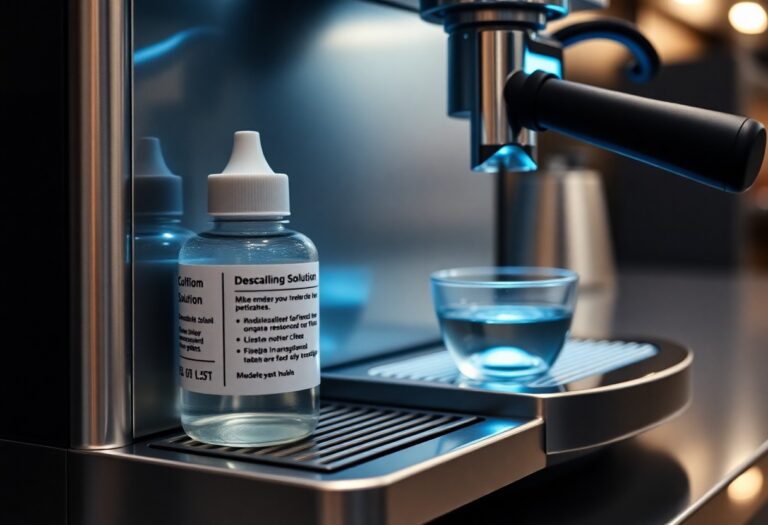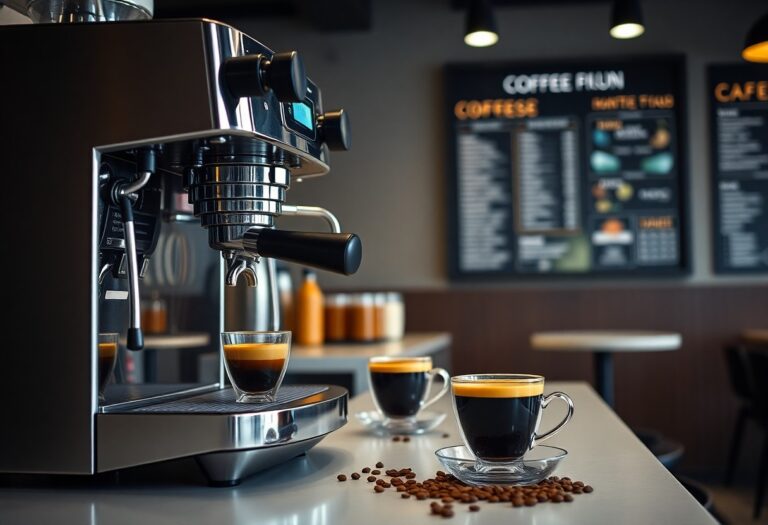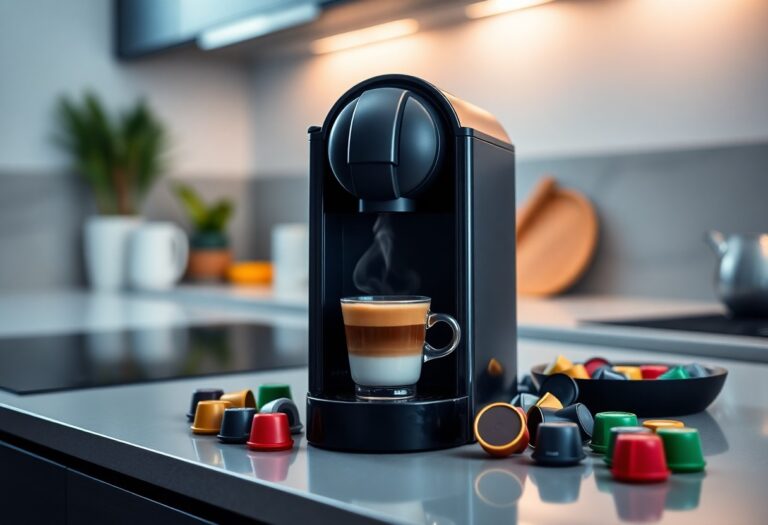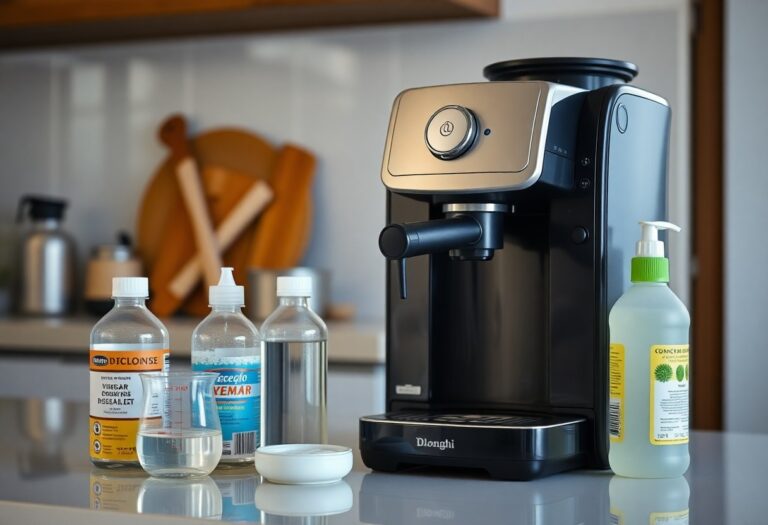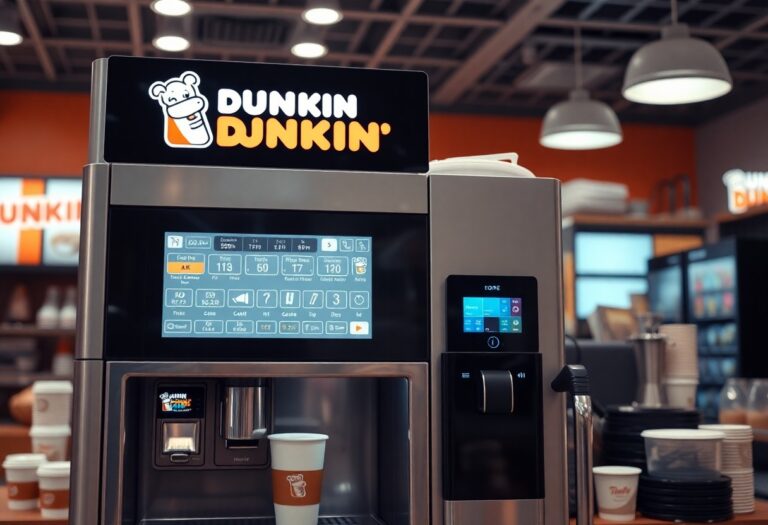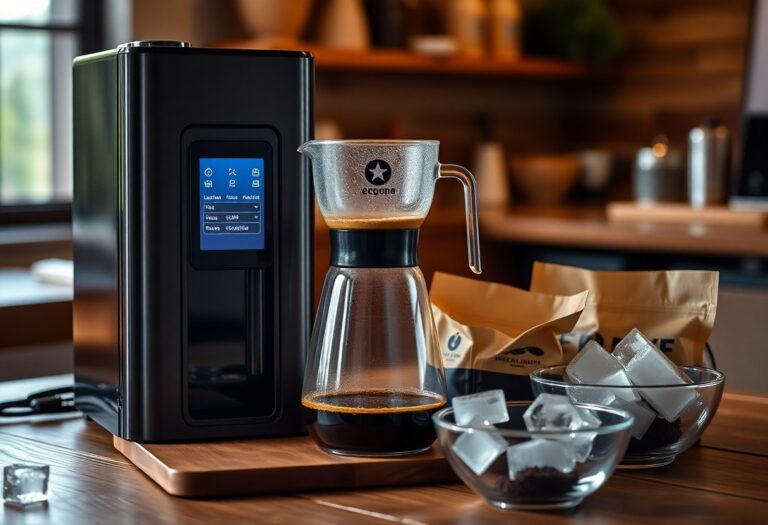What is a Filter Coffee Machine – Paper Filter System
You might be wondering how to achieve that perfect cup of coffee every morning, and that’s where a filter coffee machine with a paper filter system comes in. This equipment uses a structured process to brew your coffee, allowing flavors to develop fully while removing unwanted oils and sediments. By utilizing disposable paper filters, you ensure a clean taste and easy cleanup, but be cautious; using the wrong filter type can affect your brew’s flavor. Let’s explore how this system works and how it can enhance your coffee experience.
Key Takeaways:
- A filter coffee machine utilizes a paper filter system to brew coffee by allowing water to pass through the grounds, extracting flavors, and leaving sediment behind.
- The paper filter helps to trap fine coffee particles and oils, leading to a cleaner and lighter-bodied cup of coffee.
- These machines are user-friendly, making them popular for home brewing and in offices, with many models offering programmable settings for convenience.
- Regular maintenance and replacement of the paper filters are necessary to ensure optimal brewing and to avoid any residual flavors from affecting future coffee brews.
- Filter coffee machines come in various styles and designs, from basic models to advanced versions with built-in grinders and multiple brew strengths.

The Mechanism Behind Paper Filter Coffee Systems
A paper filter coffee system operates through a straightforward yet effective mechanism that involves several key components working in unison. During the brewing process, ground coffee is placed in the paper filter, which is then positioned in the brew basket. Hot water flows over the coffee grounds, allowing the flavors and crucial oils to be extracted. The paper filter traps the coffee grounds, letting only the brewed coffee pass through into the carafe below, ensuring a clean and aromatic cup every time.
How Paper Filters Work
Paper filters function by using their porous structure to separate coffee grounds from the liquid coffee. As hot water seeps through the grounds, it absorbs soluble compounds, resulting in the rich flavors you desire. The filter material effectively traps fine particles, preventing sludge from entering your cup while allowing aromatic oils and flavors to flow through. This contributes to a cleaner, more balanced taste profile without any gritty remnants.
The Role of Water Temperature and Brew Time
Optimal water temperature and brew time significantly influence the extraction process. Generally, water temperatures between 195°F to 205°F are ideal, as they allow for maximum flavor extraction without scorching the coffee. Brew times typically range from 4 to 6 minutes, ensuring that the water interacts with the coffee grounds long enough to draw out the aromas and flavors without over-extraction, which can lead to bitterness.
Factors Influencing Water Temperature and Brew Time
| Element | Description |
|---|---|
| Water Temperature | 600ml of water should be heated to approximately 200°F to balance the extraction balance and taste. |
| Brew Time | Between 4 to 5 min for optimal flavor without bitterness; adjust based on coffee grind size. |
Fine-tuning these parameters can drastically change your coffee experience. Higher temperatures may lead to faster extraction, while longer brew times could enhance flavor complexity yet risk bitterness. Keep an eye on your grinding consistency and adjust water proportions accordingly to ensure a well-rounded cup. Experimentation with these variables allows you to achieve a tailored brew that meets your personal flavor preferences while maximizing the qualities of your chosen coffee beans.
The Taste Test: Why Paper Filters Matter
Your choice of coffee filter can significantly influence the overall tasting experience. Paper filters excel in delivering a clean, crisp cup by effectively trapping fine coffee oils and sediment. This means that when you brew with paper filters, you’re left with a bright flavor profile that highlights the beans’ inherent notes without overpowering them. For more insights on selecting the right filter for your brewing needs, check out A Guide to Choosing the Best Coffee Filter.
Flavor Clarity vs. Oily Aftertaste
Using paper filters emphasizes flavor clarity, allowing you to experience the nuanced tastes of your coffee without the distraction of excessive oils. As paper filters absorb some of the oils present in the coffee grounds, they minimize any potential oily aftertaste that might mask the unique characteristics of each brew.
The Impact on Aroma and Freshness
The aroma and freshness of your coffee directly relate to the filter you choose. Paper filters serve to retain volatile aroma compounds that contribute to the overall olfactory experience. By filtering out undesirable particulates, they enhance your coffee’s fragrance, resulting in a more inviting cup that not only tastes appealing but also delights the senses.
When using paper filters, the impact on your coffee’s aroma and freshness is evident after the brewing process. The filter material captures many of the oils and fine particles that can contribute to staleness over time. This means your cup retains more of the inherent freshness present in the coffee grounds. The paper filter encourages a vibrant, aromatic brew that tantalizes your senses, making each sip an engaging experience. The clean brew achieved with paper filters ensures that your coffee’s rich scent remains intact, inviting you to savor every moment.
Environmental Considerations: The Paper Dilemma
The environmental impact of disposable paper filters can’t be overlooked. While convenient, the production and disposal of these filters contribute to deforestation and landfill waste. Still, many coffee enthusiasts debate whether the environmental benefits of taste and aroma from paper filters justify their use. You may find discussions, such as Are you supposed to use a paper filter along with the wire …, insightful as they explore sustainability alongside coffee brewing practices.
Biodegradability of Paper Filters
Paper filters are typically biodegradable, which means they decompose faster than many plastic alternatives. However, this process can vary based on the filter’s composition and treatment. If you use unbleached or natural paper, your environmental footprint diminishes further, making them a more eco-friendly choice for those who prioritize sustainability without sacrificing taste.
Comparisons to Reusable Alternatives
Reusable filters, such as stainless steel or silicone, provide a sustainable option that can reduce waste over time. However, these alternatives often require regular cleaning and maintenance. In contrast, paper filters allow for one-time use, eliminating concerns about buildup or contamination in your cup. The table below compares these two options to help you make an informed decision.
| Item | Paper Filters |
| Preparation | Single-use; easy clean-up |
| Environmental Impact | Biodegradable but contributes to waste |
| Taste | Improves clarity and flavor |
| Cost | Recurring expenses |
| Maintenance | No maintenance required |
Assessing the Pros and Cons of both options can help you align your coffee routine with your values. If minimal waste is your priority, reusable filters may initially be a better investment, despite their need for cleaning. Conversely, if you seek hassle-free brewing with a commitment to flavor, paper filters remain a popular choice among many coffee lovers. Carefully considering how both options fit your lifestyle will ultimately lead you to the right decision.
Choosing the Right Filter Coffee Machine
Selecting the perfect filter coffee machine can significantly enhance your brewing experience. You want a device that not only aligns with your taste preferences but also fits your daily routine. Consider how often you brew coffee and the volume you need; a machine that matches your lifestyle will serve you best, whether it’s a compact model for individual servings or a larger one for entertaining guests.
Key Features to Look For
Identifying the key features in a filter coffee machine will streamline your decision-making process. Aim for a balance of functionality and convenience, ensuring that your chosen model meets your specific needs.
- Brewing Capacity: Determine how much coffee you typically make at once.
- Temperature Control: Look for machines that allow you to adjust brewing temperatures for optimal flavor.
- Programmable Settings: Features that let you set a brew schedule add convenience to your mornings.
- Ease of Cleaning: Search for machines with removable parts or self-cleaning functions.
- Durability: Consider materials that withstand daily use, ensuring longevity.
The last thing you want is a machine that can’t keep up with your coffee needs, so choose wisely.
Budget vs. Quality: Finding Your Balance
Finding the right filter coffee machine often involves weighing budget constraints against desired quality. Although it’s tempting to opt for cheaper models, they frequently compromise on vital features and durability. Investing a bit more—perhaps $100 to $200—can grant you a machine with superior brewing capabilities and extended lifespan, thus saving you money in the long run. This approach ensures you don’t just satisfy your immediate needs but also secure your long-term coffee enjoyment.
Brew Techniques to Maximize Flavor
Applying the right brewing techniques can elevate your coffee to new flavor heights. Focusing on factors such as grind size, water temperature, and pouring methods allows you to extract the optimum flavor from your beans. By paying close attention to these variables, you can create a beautifully balanced cup of coffee that highlights your chosen roast’s distinct characteristics.
Grind Size and Its Influence on Extraction
Your grind size plays a pivotal role in how flavor compounds are extracted during brewing. Finer grinds increase the surface area, leading to a quicker extraction, while coarser grounds slow down the process. Adjusting your grind size can help you strike a balance between over-extraction, which may cause bitterness, and under-extraction, often resulting in a sour taste. Finding the ideal grind tailored to your specific coffee and brewing time unlocks the full flavor potential.
Pouring Methods: Circular Motion vs. Steady Stream
The method you choose to pour water can impact flavor extraction significantly. A circular motion allows for even saturation, promoting a more uniform extraction of flavors, while a steady stream might not distribute water as effectively. By experimenting with these pouring techniques, you can control the rate at which water interacts with the coffee grounds, ultimately influencing the final taste of your brew.
Adopting a circular pouring technique not only ensures an even saturation across the coffee bed but also offers greater control when it comes to the flow rate. This method helps keep the coffee bed even, preventing channeling and uneven extraction that can produce inconsistent results. A steady stream can be effective but often lacks the nuanced approach needed for complex flavors. Engaging in a circular pour maximizes interaction with the coffee grounds, enhancing the subtleties of flavor and creating a more enjoyable tasting experience.
Conclusion
On the whole, a filter coffee machine utilizing a paper filter system provides you with a convenient and efficient way to brew flavorful coffee. This method allows your coffee grounds to steep evenly, resulting in a smooth cup that highlights the intricacies of your chosen beans. By managing the brewing time and water temperature, you can customize your coffee experience to match your preferences. Investing in a quality filter coffee machine enhances your daily routine, ensuring that each cup you enjoy is consistent and satisfying.
FAQ
Q1: What is a filter coffee machine with a paper filter system?
A: A filter coffee machine with a paper filter system is an appliance designed to brew coffee using ground coffee and a paper filter. The machine heats water and drips it over the coffee grounds contained in the filter, allowing the brewed coffee to flow through while trapping the coffee grounds. This method typically results in a clean and clear cup of coffee, as the paper filter absorbs fine particles and oils.
Q2: How does the brewing process work in a paper filter coffee machine?
A: The brewing process involves several steps. First, water is heated in the machine’s reservoir. Once heated to the optimal brewing temperature, the water is dispersed over the coffee grounds contained in the paper filter. This allows water to extract flavors and oils from the coffee grounds. The brewed coffee drips down into a carafe or pot below the filter, while the paper filter holds back the grounds. The entire process generally takes about 5 to 10 minutes, depending on the machine.
Q3: What are the advantages of using a paper filter system in a coffee machine?
A: Using a paper filter system offers several advantages:
1. Cleanliness: Paper filters trap oils and fine coffee particles, resulting in a cleaner cup of coffee.
2. Ease of use: Paper filters are user-friendly; once used, they can simply be discarded without any mess.
3. Consistency: The paper filters provide a consistent brewing experience, as they help maintain the ideal flow rate of water through the coffee grounds.
4. Flavor: Many coffee enthusiasts appreciate the flavor profile that a paper filter can produce, as it often leads to a brighter and more delicate taste.
Q4: Are there any downsides to using a paper filter coffee machine?
A: While there are many benefits, there are some downsides to consider as well. One is that paper filters can absorb some of the coffee’s natural oils, which can alter the flavor and mouthfeel compared to metal or cloth filters. Additionally, paper filters must be replaced regularly, adding an extra cost over time. Lastly, some individuals may find that they prefer the full-bodied taste of coffee brewed using alternative filtering systems that retain more oils.
Q5: How do I maintain and care for my filter coffee machine?
A: To ensure your filter coffee machine operates effectively, regular maintenance is important. This typically includes:
1. Cleaning the machine: Regularly rinse the carafe, coffee basket, and any removable parts with warm, soapy water after each use.
2. Descaling: Periodically, you should descale the machine to remove mineral buildup, especially if you live in a hard water area. This can be done using a commercial descaling solution or a vinegar-water mixture.
3. Replacing paper filters: Make sure to have enough paper filters on hand and replace them as needed to avoid any flavor issues.
4. Checking seals and gaskets: Inspect rubber seals regularly for wear and tear, as this can affect the brewing process. Replace any worn parts promptly to maintain optimal performance.


